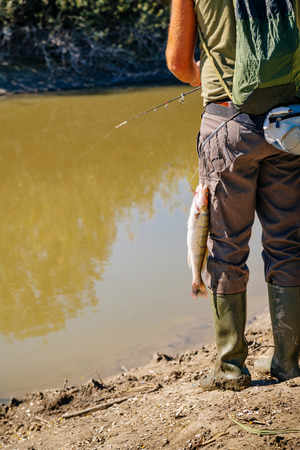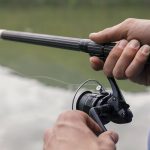1. Understanding the Problem: Fishing Line and Litter
Fishing is a beloved pastime across the United States, from the shores of Florida to the lakes of Minnesota and the rivers of the Pacific Northwest. But with millions of anglers hitting the water each year, theres a growing problem that’s becoming hard to ignore—fishing line and litter left behind.
What’s Being Left Behind?
The most common waste found in U.S. waterways from recreational fishing includes:
| Type of Waste | Description | Environmental Impact |
|---|---|---|
| Monofilament Fishing Line | Single-strand plastic line used by most anglers | Does not biodegrade; can entangle wildlife and damage boat motors |
| Plastic Bait Containers | Packaging for artificial baits or live bait containers | Adds to plastic pollution; often mistaken for food by animals |
| Plastic Bags and Wrappers | Used for snacks, tackle packaging, etc. | Easily blown into water; harmful if ingested by fish or birds |
Why Monofilament Lines Are a Big Deal
Unlike biodegradable materials, monofilament fishing lines can remain in the environment for up to 600 years. When these lines are discarded improperly—tossed on shorelines or cut loose in the water—they create serious hazards. Birds, turtles, fish, and even small mammals can get tangled in them, leading to injury or death. Additionally, tangled line can damage boat propellers and clog intake valves.
The Bigger Picture: Impact on Ecosystems
Litter from fishing doesn’t just affect individual animals—it disrupts entire ecosystems. For example, when fish ingest small pieces of plastic mistaking them for food, it can block their digestive systems and lead to starvation. These plastics may also absorb toxins from the water, which then enter the food chain and potentially impact human health as well.
Common Wildlife Affected by Fishing Waste:
- Birds: Often get caught in lines while diving for fish.
- Turtles: Mistake floating plastic bags for jellyfish.
- Dolphins & Seals: Can become entangled in large webs of discarded line.
A Nationwide Concern
This issue isn’t limited to one region. From saltwater coasts to inland freshwater lakes and streams, discarded fishing gear is showing up everywhere. States like California and Florida report high volumes of fishing-related litter each year, especially in popular angling spots where foot traffic is heavy but disposal options are limited.
Fast Facts:
- An estimated 1 million seabirds die each year due to plastic pollution.
- Fishing line is one of the top five items found during coastal cleanups in the U.S.
- A single piece of monofilament line can entangle multiple animals over time.
The problem is clear: improperly discarded fishing gear is harming our waters, wildlife, and communities. But understanding what’s going wrong is the first step toward making things right.
2. Cultural and Recreational Importance of Fishing in the U.S.
Fishing holds a special place in American culture. Its more than just a hobby—its a tradition passed down through generations, a weekend escape for families, and a vital source of income for many coastal and lakeside communities. Whether youre casting off a dock in Michigan, fly fishing in Montana, or deep-sea fishing off the Florida coast, fishing connects people to nature and to each other.
Fishing as a Way of Life
For many Americans, especially in coastal towns and rural areas, fishing isnt just for fun—its how they make a living. Commercial fishermen rely on healthy waterways to support their businesses. Sport fishing also fuels local economies through tourism, bait and tackle shops, boat rentals, and guided tours.
Economic Impact of Recreational Fishing
| Category | Annual Economic Contribution |
|---|---|
| Recreational Fishing Industry | $148 billion |
| Jobs Supported | Over 800,000 |
| State & Local Tax Revenue | $5 billion+ |
These numbers show how important it is to keep our waters clean—not only for the fish but for the people who depend on them.
A Beloved American Pastime at Risk
Litter, especially discarded fishing line and plastic waste, puts this cherished pastime at risk. Tangled lines can trap birds and marine animals, while trash pollutes the very spots where families fish together. No one wants to cast their line into water filled with garbage.
The Impact of Litter on Fishing Experiences
- Environmental Damage: Wildlife can get injured by hooks or tangled in old lines.
- Water Quality: Plastic waste breaks down slowly, affecting ecosystems over time.
- User Experience: Trash-filled shorelines discourage people from returning to favorite fishing spots.
If we want future generations to enjoy fishing as we do today, its crucial to address litter issues now. Keeping fishing areas clean helps protect both nature and the cultural traditions that make fishing such an essential part of American life.
![]()
3. Community-Led Clean-Up Efforts
Across the United States, fishing communities are stepping up to tackle the problem of fishing line and litter through grassroots clean-up initiatives. These efforts often bring together local anglers, nonprofit organizations, environmental groups, and everyday volunteers who care deeply about keeping their waters clean and safe.
How Local Anglers Are Making a Difference
Many recreational and professional anglers are leading by example. They not only pick up trash while out fishing, but also encourage others to do the same. Some have organized regular “pack it in, pack it out” campaigns at local lakes and piers, reminding fellow fishermen to leave no trace behind. In states like Florida and California, angler-led beach sweeps have become monthly traditions that include families, school groups, and even local businesses.
Nonprofits on the Front Lines
Environmental nonprofits play a huge role in organizing larger-scale clean-up events and educational programs. Organizations such as Keep America Beautiful, The Ocean Conservancy, and Reel American Heroes Foundation partner with local communities to provide supplies like gloves, bags, and safety gear for volunteers. They also help track the types of waste collected to better understand pollution sources.
Examples of Community Clean-Up Initiatives
| Initiative Name | Location | Main Organizer(s) | Activities |
|---|---|---|---|
| Pier Sweep Saturdays | Santa Monica, CA | Local Fishing Club + Coastal Nonprofit | Monthly clean-ups, recycling stations for fishing lines |
| Cast & Clean Events | Lake Okeechobee, FL | Community Anglers + School Groups | Litter pickup + youth education workshops |
| Tackle Trash Together Day | Galveston Bay, TX | Environmental NGO + Local Marina | Boat-based shoreline clean-ups, public awareness booths |
Educating the Next Generation
A big part of these community-led efforts is focused on education. Volunteers visit schools to talk about how litter affects fish and wildlife. Youth programs like “Junior Anglers for Clean Waters” teach kids proper disposal of fishing line and the importance of protecting natural habitats. By getting young people involved early, these initiatives help build lifelong habits of stewardship.
The Power of Working Together
No single group can solve the issue of fishing litter alone—but when anglers, nonprofits, and neighbors work side by side, real change happens. Whether its through a weekend clean-up or teaching a child how to recycle monofilament line properly, every action adds up in keeping our waters clean for future generations.
4. Innovative Solutions and Recycling Programs
As the problem of fishing line and litter continues to affect U.S. fishing communities, innovative solutions and recycling programs are stepping up to make a difference. From high-tech recycling stations to biodegradable gear, these advancements are helping protect our waterways while keeping the sport of fishing sustainable for future generations.
Fishing Line Recycling Stations
One of the most effective and widely adopted solutions is the installation of fishing line recycling stations. These stations are often found at popular fishing spots such as piers, boat ramps, and marinas. Anglers can dispose of used monofilament lines properly, preventing them from ending up in the water where they can harm wildlife.
Benefits of Recycling Stations
| Feature | Impact |
|---|---|
| Convenient Locations | Makes it easy for anglers to dispose of line responsibly |
| Reduces Marine Debris | Keeps harmful plastics out of oceans and lakes |
| Supports Education | Encourages responsible behavior through signage and outreach |
Biodegradable Fishing Gear
Another promising innovation is the development of biodegradable fishing gear. Traditional gear like hooks, lures, and lines can take hundreds of years to break down. Biodegradable alternatives are designed to decompose more quickly if lost in the water, reducing long-term environmental damage.
Examples of Biodegradable Gear
- Biodegradable fishing line: Breaks down naturally over time when exposed to sunlight and water.
- Corn-based soft plastic baits: Made from plant-based materials that degrade faster than petroleum-based plastics.
- Dissolvable hooks: Designed for catch-and-release; dissolve in saltwater after a few days if not retrieved.
Technology-Driven Waste Reduction
Modern technology is also playing a role in tackling waste in both marine and freshwater environments. From mobile apps to smart trash bins, digital tools are making it easier than ever for anglers and communities to manage their impact on nature.
Popular Tech Innovations
| Technology | Description |
|---|---|
| Clean Swell App | Allows users to log trash collected during cleanups, contributing to global data on marine debris. |
| Smart Bin Sensors | Sensors placed inside trash bins alert when full, improving waste collection efficiency at busy fishing sites. |
| Drones for Monitoring | Drones help track litter hotspots in hard-to-reach areas for targeted cleanup efforts. |
A Community Effort
The success of these innovations depends on community involvement. Whether youre a weekend angler or a commercial fisherman, participating in recycling programs, using eco-friendly gear, and embracing new technologies can go a long way in preserving our waters for everyone.
5. What Anglers Can Do: Responsible Fishing Practices
Every angler has a role to play in keeping Americas waterways clean and healthy. Whether youre casting from the shore of a lake in Minnesota or trolling off the Florida coast, adopting responsible fishing habits helps protect wildlife, maintain access to natural spaces, and preserve the sport we all love. Here are some practical tips that fit right into everyday American fishing culture.
Proper Fishing Line Disposal
Fishing line is one of the most common types of litter found in U.S. waterways. It can entangle birds, turtles, and other wildlife. Because monofilament and braided lines take hundreds of years to break down, proper disposal is crucial.
How to Handle Used Fishing Line
| Do | Dont |
|---|---|
| Use monofilament recycling bins often found at boat ramps and piers | Leave used line on the ground or toss it in regular trash cans |
| Collect broken or tangled line in a resealable bag until you can dispose of it properly | Burn or bury fishing line — its harmful and illegal in many areas |
Choose Ethical and Eco-Friendly Gear
The gear you use can make a big difference. Many U.S. brands now offer environmentally conscious options that align with sustainable fishing values.
Eco-Friendly Gear Tips
- Lead-Free Weights: Switch to tin, tungsten, or steel sinkers to avoid poisoning wildlife.
- Barbless Hooks: Easier catch-and-release with less harm to fish.
- Biodegradable Baits: Choose baits that won’t linger in the environment if lost.
Get Involved in Clean-Up Events
A great way to give back is by joining local clean-up events. Many state fish and wildlife agencies, conservation groups, and angler clubs host shoreline and river clean-ups throughout the year.
Ways to Participate
- Join Local Efforts: Check with your local bait shop or marina bulletin board for upcoming clean-ups.
- Create Your Own: Rally your fishing buddies for a morning clean-up before hitting the water.
- Spread Awareness: Post your efforts on social media using hashtags like #KeepItClean or #AnglersForConservation to encourage others.
Quick Tip:
Toss a small trash bag in your tackle box so you’re always ready to pack out what you pack in—and maybe even a little extra.
By making small changes and staying mindful while out on the water, anglers across the U.S. can help ensure our fishing traditions last for generations to come.


